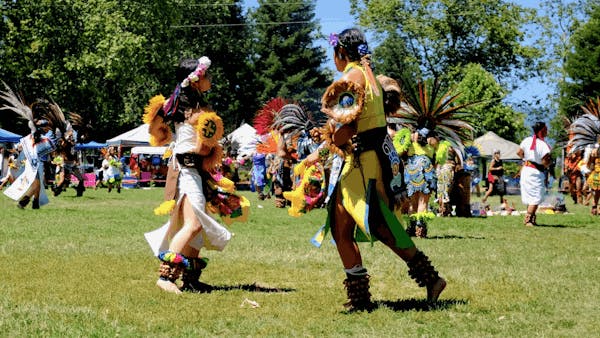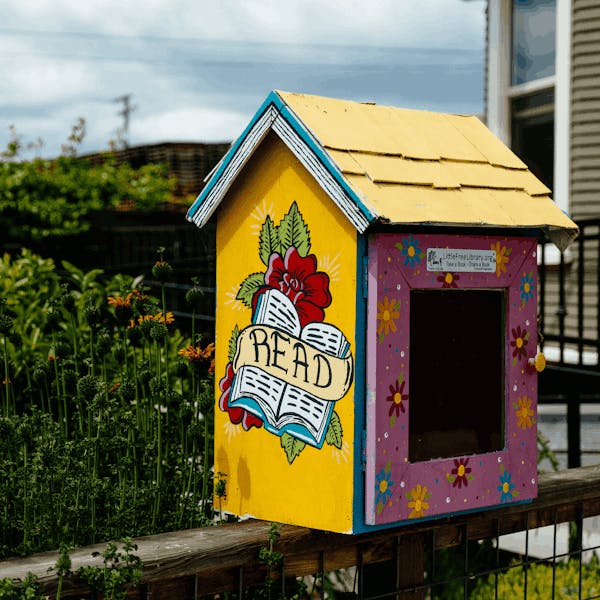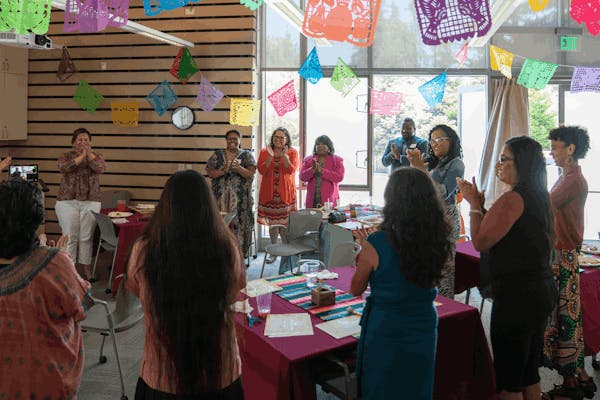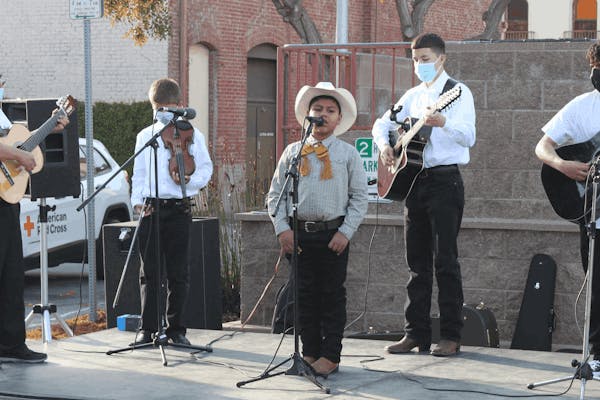
Xilonen Festival Celebrates Young Women, Indigenous Culture, and Community
Charitable giving benefiting Native American and indigenous organizations has traditionally been disproportionately low, including locally. As a grantmaker, we aspire to leverage our resources toward a future that is just, equitable, and inclusive of our diverse community. We are proud to support the White Hawk/Ixtatutli Indian Council for Children, whose work is profiled below.
It’s a warm day in July and the sound of drumming filters into the nearly full parking lot at Pinto Lake County Park. Neighbors and visitors of all ages from over the hill and across the country gather around the perimeter of a large circle outlined by potted herbs, flowers, and vegetables. Incense burns next to conch shells, flowers, and bowls of fresh fruit from the shade of easy-up tent altars decorated with bright bouquets and green stalks of corn.
Women, men, teenagers, and young children dance together to the steady drumbeat, seed pod rattles or yoyotles announcing every practiced step, like the soft hushing of water over rocks. Two teenage girls, in white and yellow dresses embroidered with Aztec symbols, face one another dancing in unison, laughing together as they miss a step. An older woman dances nearby, her sequined torso flashing in the sun as she twists from side to side, fully immersed in the movements.
This is the annual Xilonen (shee-lone-en) Festival hosted by the White Hawk/Ixtatutli Indian Council for Children. 150-300 dancers attend each year to celebrate their cultural heritage and support the girls in their community who are undertaking the ancient rite of passage from childhood to womanhood.
For the past two years, these girls, called Xilonen, have been preparing for the special ceremony. The preparation includes choosing a sponsor or madrina to guide and support them as they learn a new skill, navigate the challenges of school and personal life, and transition into womanhood. The Council also provides workshops that teach leadership skills, opportunities to practice public speaking, and, of course, classes in traditional Aztec dance.
“They choose a goal and are held accountable from day one,” says Anai~i Aranda, President of the White Hawk/Ixtatutli Indian Council for Children. “It stretches the boundaries of what they’re accustomed to learning. It also helps them to know they can succeed in whatever it is they choose to do. You put in the work and you can succeed.”

Connecting youth to their cultural heritage
Anai~i (pronounced Ahn-ah-ee) has directed the Council since 1983 and is proud to have kept their indigenous art and cultural programs free to all youth in Pajaro Valley for the past four decades. “We’re very thankful and fortunate that we’ve been able to continue this year after year,” she says. “It’s all due to supporters like the Community Foundation helping us out with grants. We also hold fundraisers and educational presentations, and all of the money raised goes to our children.”
This long-term community support allows young women like Diana Hernandez to learn about herself and her cultural heritage. “These traditions and many indigenous cultures were almost completely wiped out,” says Diana. “There were many people before me who dedicated themselves and made sacrifices to keep these traditions alive, and their efforts shouldn’t be taken in vain. I hope to continue to carry these traditions with me and pass them on to the next generation.”
A lifelong journey Diana danced in the ceremony this year as a Xilonen, officially marking her passage from a girl to a young woman. Over the past two years, she worked with her madrina to learn how to design and sew her own dress for the dance. She also learned a song that she performed in front of her peers and elders in the sweat lodge ceremony the day before the public Xilonen Festival. At the two-day festival, Xilonen dance for 4-5 hours each day. “I was excited to show Anai~i and the others our dance, but I was also nervous and scared that I would mess up, miss a step, or trip,” says Diana. “I ended up leading the dance, we did great in my opinion, and I was really proud of myself for stepping out of my comfort zone and leading it.”
Although the dance itself is an important part of the experience, the process of becoming a Xilonen doesn’t end after the ceremony comes to a close. “I learned that being a Xilonen is not only a commitment until the day of the ceremony, but a lifelong commitment,” says Diana. “It was an opportunity for me to learn more about my culture and our traditions that were almost lost in the unfortunate colonization of indigenous communities. The ceremony is important because it is a celebration of our young women and an opportunity for those that are curious about our culture and traditions to observe and celebrate with us. I will continue to be a role model for the little girls in our groups that will hopefully be future Xilonens.”
Cultivating community across generations
According to Anai~i, the rite of passage not only empowers the young women, as it did for Diana, but deeply connects them to their community. This means that it’s very common for Xilonen to return year after year to be mentors to the next generation. “It’s realizing that you are acknowledged and that all your community is there supporting you,” says Anai~i. “That it’s not just your mom and dad … it enlarges your circle of connectivity.”
Her other hope for the girls who take part in the ceremony is that they will walk away with the knowledge that they can achieve more than they thought possible. Diana shares that her experience taught her the value of perseverance and revealed her full potential.
“It made me realize that I am capable of carrying out big commitments that at the time may seem like something that is too far out of reach,” says Diana, “and it made me realize the importance of seeing things out until the end even when it gets hard. Being a Xilonen was not an easy task, but I would do it a thousand times over because in the end, it was an experience that has helped me for the better and that I will be forever grateful for.”
After hours of dancing, the Xilonen and the hundreds of men, women, and children who have come to show their support, join hands in a large circle around the drummers. The dancers move in unison, headdresses and flower crowns (coronas) bobbing with the slowing beat of the drums. A chorus of conch shells fills the park. The drumming ceases and someone’s voice rises across the field. Now both adults and children will have a turn to speak during palabra. You can sense the power of community within the circle that stretches across generations.
"The ceremony provides a connection with the community," says Anai~i. "It’s realizing that you are acknowledged, and that all your community is there supporting you. Learning your culture's traditions is also very empowering. If you know where you come from, you have the power and strength to go wherever you choose."
Learn more about supporting nonprofits like this one through our Fund for Arts, History & Culture.
Support local arts, culture, and history

